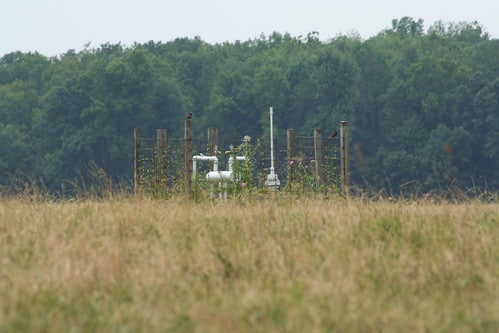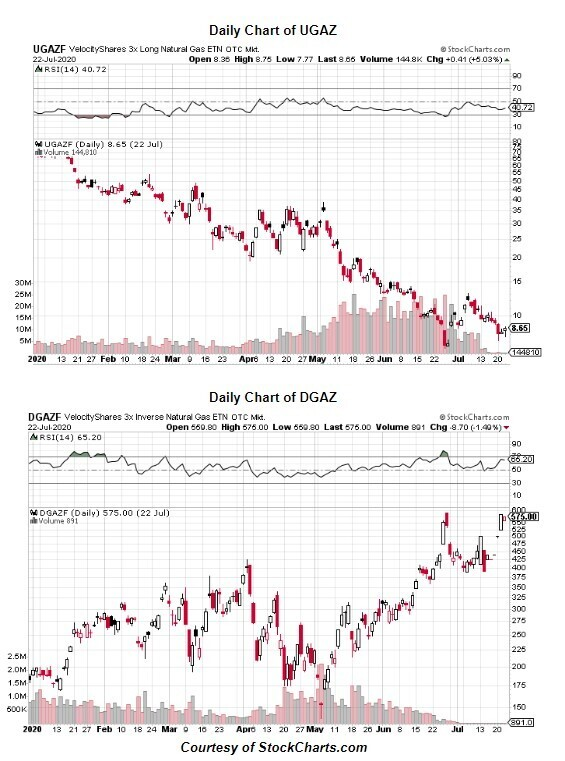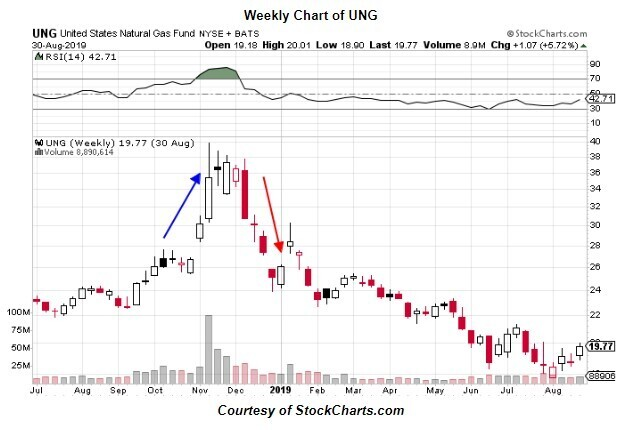UGAZ Stock & DGAZ Stock – Here’s How To Trade Them
UGAZ Stock & DGAZ Stock – Here’s How To Trade Them
I f you want to trade UGAZ stock, DGAZ stock, and other natural gas stock, you need to understand the proper steps to take.
Trading leveraged ETFs related to commodities can turn into a gainful activity since you can easily track the potential supply and demand. Consequently, you can catch the trends.
One of the primary commodities that are of great interest to investors is natural gas.
In this post, we will discuss how to trade two leveraged ETFs that are indirectly related to natural gas. These are UGAZ (VelocityShares 3x Long Natural Gas) and DGAZ (VelocityShares 3x Inverse Natural Gas).
What Are UGAZ Stock and DGAZ Stock?
UGAZ and DGAZ are two 3x leveraged EFTs that track the same underlying asset — the United States Natural Gas Fund. Now, the UNG tracks the price movements in natural gas. So a UNG stock prediction will impact DGAZ and UGAZ directly.
The primary objective of UGAZ (VelocityShares 3x Long Natural Gas) is to amplify the daily performance of UNG by three times or 200%. In other words, if UNG price raises 1%, UGAZ will generally show a daily gain of 3%. You should think about trading UGAZ when you have a bullish sentiment on UNG.
The primary target of DGAZ (VelocityShares 3x Inverse Natural Gas) is to generate profits from the losses in the UNG fund. DGAZ will tend to amplify the losses by three times or 200% inversely. Thus, if UNG price falls by 1%, DGAZ should bring you a profit of 3%. Accordingly, you would consider this leveraged ETF when you have a bearish sentiment on the UNG fund.
As you may have noticed, both UGAZ and DGAZ have 3:1 leverage, which can significantly increase your potential profit.
We must emphasize that leveraged ETFs are much riskier than regular ETFs. In fact, you can think about these instruments as some of the riskiest ones in the long term. The good news is that you can confidently consider them in the short term because this is what they were made for — to amplify the performance of an underlying asset during short periods like one day.
That said, the profit potential is directly proportional to the risks assumed.
However, whether I’m trading stocks or ETFs, I use trade options to place my bets strategically.
Tracking UNG
Image via Flickr by danxoneil
If you want to trade UGAZ or DGAZ, it’s vital to keep an eye on the UNG fund, since it is the base ETF that drives both leveraged ETFs. Understanding the direction that this market is going is crucial when you’re evaluating UGAZ vs DGAZ since they will reward you for opposite movements.
If you want to trade UGAZ or DGAZ, it’s vital to keep an eye on the UNG fund, since it is the base ETF that drives both leveraged ETFs. Understanding the direction that this market is going is crucial when you’re evaluating UGAZ vs DGAZ since they will reward you for opposite movements.
The United States Natural Gas Fund provides speculators exposure to natural gas. This is why you should initially analyze everything related to natural gas, like the EIA Natural Gas Report, the weather in the U.S., and so on.
Now, when talking about UNG, you should know that this is really a tricky exchange-traded fund. You might consider it for going short in the long term, but as soon as you plan to trade leveraged ETFs based on it, you can consider both UGAZ and DGAZ.
First of all, natural gas by itself is a very volatile commodity. Secondly, UNG is not directly related to natural gas in the real sense of it. UNG would not be a smart investment as it dropped by over 90% since its start.
You can see that the ETF lost most of its initial value. This is why you shouldn’t consider investing in UNG in the long term.
Moreover, it doesn’t pay dividends, which is another serious drawback that investors should know about.
The main reason for this is because UNG doesn’t keep stocks representing a sector but uses future contracts and OTC swaps to catch and mimic the natural gas price.
Even if UNG is not a good investment per se, speculating with UGAZ and DGAZ may be suitable. The short-term volatility is not affected by the long-term drop of the UNG fund, and you are not interested in dividends when keeping positions for up to several days.
UNG vs. UGAZ DGAZ
Understanding the relationship between the UNG fund and its derived leveraged ETFs is the key to opening profitable positions.
As we mentioned above, UGAZ amplifies the UNG gains, while DGAZ goes up when UNG drops in price. Understanding the relationship between the UNG fund and its derived leveraged ETFs is the key to opening profitable positions.
To make it easier for you, think about UGAZ like up-gaz and DGAZ like down-gaz.
Here is what it’s like on the chart:
You can see that UGAZ (yellow) tends to amplify the UNG (blue) percentage gains, while DGAZ (red) shows a mirrored image, by going up when UNG and consequently UGAZ drop and vice versa. If you pay attention to the percentage figures, you can see that the target of 2f00% is relatively maintained.
UNG Prediction and What to Watch
Being aware of the weather forecast is fundamental when you trade natural gas, UGAZ, DGAZ, or UNG.
There used to be a ratio of approximately 6:1 between the oil price and natural gas price.
Whenever this relationship was distorted, the price tended to come back. This is because in the past, a barrel of oil had approximately the same rate as six mcf (thousand cubic feet) of natural gas, and the energy output was equivalent.
However, in recent years, it seems this ratio does not work anymore. As of today, natural gas is almost 19 times cheaper than oil, and this general trend will probably continue for many more years.
What you should pay attention to is the seasonal change in the natural gas price, and here I mean the transition from the warm season to the cold season and vice versa. Take a look at this chart:
This chart shows how vital the cold season is for natural gas demand. You can see that the price peaked in December and since then it went down hitting the support level.
You may find occasional sharp moves downwards, like the recent one from February 21, 2017. Why does this happen? First of all, predicting the long-term natural gas price is tricky because it is heavily dependent on weather forecasts.
So, being aware of the weather forecast is fundamental when you trade natural gas, UGAZ, DGAZ, or UNG. During the period of transition from the cold season to the warm season, you should be interested in paying more attention to DGAZ. Purchasing DGAZ is like shorting the UNG fund, though you can still capture some quick wins in UGAZ.
If the weather forecast can directly influence the potential demand, you should also take note of the second factor: the change in natural gas supply. To do this, you have to check the weekly natural gas storage report presented by the US Energy Information Administration.
Both the EIA report and the weather forecast may give hints about the future direction of the natural gas price.
However, keep in mind that UNG only tries to mimic the natural gas price, but it doesn’t necessarily mean that it does it successfully. You should always be ready for another UNG price collapse.
What a Bull Flag Means
A bull flag occurs when there’s a sharp uptrend in a stock. The flag pole is created by the upward trend and the flag is the result of a period of consolidation. You might see a bull flag if the energy industry experiences a major stock peak. UGAZ is a prime pick with a bull flag, as it allows you to benefit from a rising stock price in this industry. Knowing what patterns to watch for is crucial in this market.




